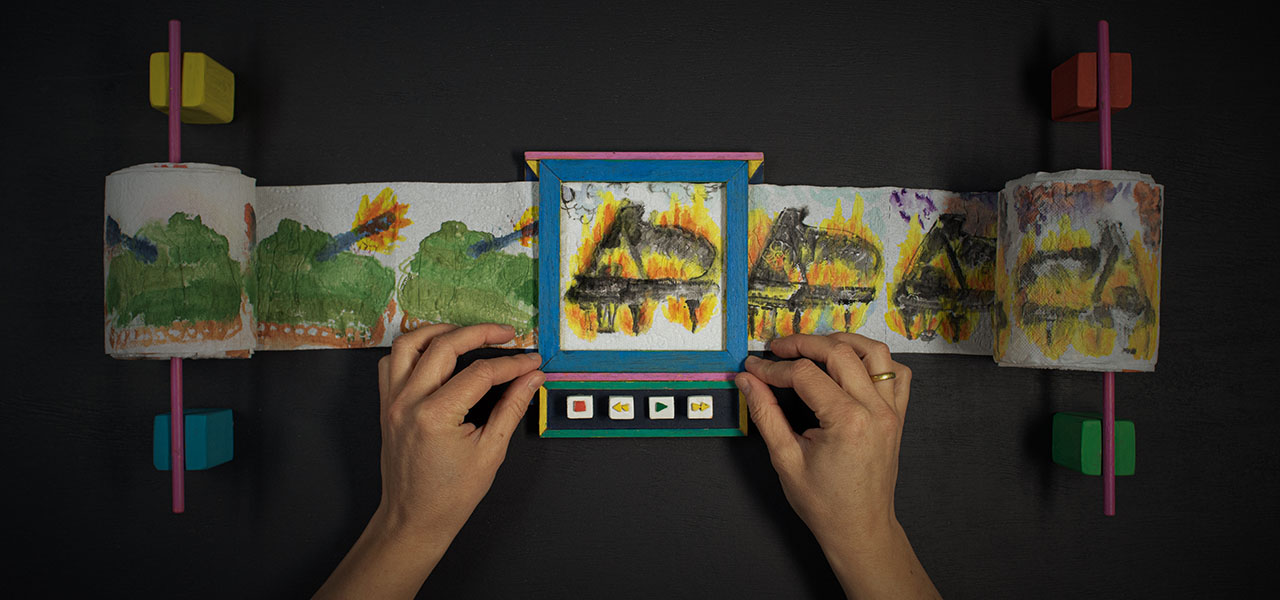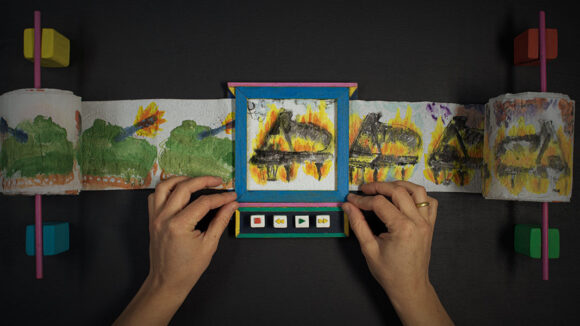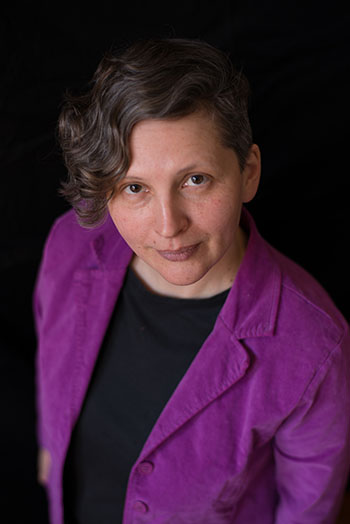

2025 Oscars Short Film Contenders: ‘The Wild-Tempered Clavier’ Director Anna Samo
Cartoon Brew is putting the spotlight on animated short films that have qualified for the 2025 Oscars.
In this installment, we’re looking at The Wild-Tempered Clavier from filmmaker Anna Samo. The short earned its Oscars qualification by winning best animated short at the Woodstock Film Festival.
Animating on toilet paper, Samo tells the story of an artist struggling to cope with the uncertain and chaotic world around him. How does one keep playing — or animating – as war rages somewhere. The Wild-Tempered Clavier’ unique approach draws on Bach’s timeless music and the heritage of animation painted directly on 35mm film. The film is produced by Berlin-based Tiger Unterwegs Filmproduktion.
Cartoon Brew: As an artist yourself living in a tormented world, what would you want to share with your fellow animators on how to go and “keep playing piano” despite all odds and challenges?

Anna Samo: For me, making films is the only way to look at what is happening around me and to try to make some sense of it. I think it is worth the trouble to share our human experience the best way we can. I also really love making animation, for the magic of it. Of course, like in every long-term relationship, it is not always easy to keep the feelings fresh, so I try to organize my process in a way that it reconnects me with my love. And when in doubt, I turn to other artists for inspiration.
As I was stuck with this film, I read Requiem For A Manual Typewriter by Jonas Mekas. In this novel the author finds a dusty roll of computer paper under his desk and decides to stretch it into his typewriter and type a novel on it. He doesn’t know how to start and how to finish and he encounters many interruptions and challenges, and breaks his own rules along the way. This novel is an ode to the creative process and it inspired me so much that I finished animating the last roll of toilet paper and found the necessary energy to finally edit the footage and finish the film.
What was it about this story or concept that connected with you and compelled you to direct the film?
At first, I only had the title in my head and the thought of combining painting on toilet paper with a prelude from “The Well-Tempered Clavier” by J.S. Bach. I liked the juxtaposition of the most perishable everyday object with the music that has been around for three hundred years and will probably be around much longer.
The first animation tests were made during the pandemic lockdown in New York City when toilet paper suddenly became a valuable commodity. It was my reaction to everything that was in the air – the uncertainty, the erratic human behavior, and the overwhelming feeling of being lost. I wanted to spend time with the music, hold onto its beauty in the tumult of momentary dramas, and I wanted to play around with the materials at hand while creating the animation. This was the initial impulse for making the film.
What did you learn through the experience of making this film, either production-wise, filmmaking-wise, creatively, or about the subject matter?
It was sometimes hard to make myself believe that at the end there will be a film. I did not have a storyboard or a clear message I wanted to pass on. Instead, I followed more of the feeling that I need to animate with this process. So more often than not I was in panic, because the time was passing and I still could not explain what my film was about.
I started making the film out of the desire to play, but the world around me was getting ever gloomier. I left Russia nearly twenty years ago, but I still have family and friends living there. The Russian invasion of Ukraine became a sore spot in conversations with my parents and I have seen many friends and fellow artists faced with the difficult choice to leave their country or to stay and to adjust to the new reality. And there I was, sitting in my studio and painting on toilet paper.
Looking back, I know this was the right approach – to allow myself to wander around and to let the narrative grow by itself without forcing it. Somewhere in the background the film was shaping itself in its own time. And once I felt ready to sit down and edit the footage – it took me less than three days to find the structure and the meaning. For the first time in two years, I could say without twitching that I had a film. Accepting uncertainty into the creative process was nerve-racking but it did pay off at the end.
Can you describe how you developed your visual approach to the film? Why did you settle on this style/technique?
There are two layers of animation in the film. The first layer is the world of the pixilated hands of a filmmaker and the machine that transports the toilet paper. The hands operate the machine, starting and stopping the filmstrip, rewinding and actively editing the footage. They have control over what is happening, or at least so it seems… I wanted the machine to have bright colorful elements – to keep the feeling of playfulness.
The second layer is the watercolor-painted animation that “magically” appears on the toilet paper. I like the thought of the uncertainty and the loss of control that comes with it. As an animator you have to focus in a very different way working directly on film – there is no way to check the animation and the frames are never underneath each other, always next to each other. You have to create a substantial amount of animation before you can watch it. And there is no “undo” button – you have to accept the possibility of making a mistake and work around it.
I created my set of rules, which helped me imitate the process of animating directly on film stock. The visual style here was partly determined by the material and the technique. I wanted the colors to be bright, so I used Japanese watercolors developed for rice paper. The size of the image was small and there was no way to control the way the watercolor would soak into the paper, so the images could not be too detailed. It was surprising for me to see how far I could push the limits, how rough the separate images could be, and one still would recognize the movement.

.png)